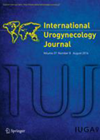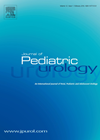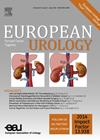
Journal Reviews archive for 2016
How effective are intravesical therapies for bladder pain syndrome?
The objective of this study was to review the clinical efficacy of currently available products for the intravesical treatment of bladder pain syndrome (BPS) / interstitial cystitis (IC) and to assess their pharmaco-economic impact. Nineteen articles were reviewed, including five...
Do complementary therapies work in painful bladder syndrome?
The aim of this systematic review was to evaluate the effectiveness of complementary therapies in the treatment of bladder pain syndrome. An electronic search identified 1454 articles; however, after review by two independent reviewers, this was reduced to 11 articles...
Surgical management of urethral diverticula in women
This systematic review aimed to evaluate different surgical techniques and their outcomes used for treating women with urethral diverticulae. One hundred and eight studies were identified; some of these however were single case reports (37%). As one would expect the...
Cord compression in cancer
This article will be of great interest to uro-oncologists. Vertebral metastasis occurs in 3-5% of all cancers (most commonly in prostate, breast and lung cancer). It can cause pain, vertebral collapse and cord compression. Data from the National Institute for...
Do stones still kill?
This paper is a retrospective analysis of deaths ascribed to stone disease in England and Wales over a 15-year period. The data was obtained from the Office of National Statistics, based on mortality derived from death certificates. One thousand, nine...
Worldwide flexible ureteroscopy practice uncovered
While guidelines recommend flexible ureteroscopy (fURS) for treating renal stones <1.5cm, considerable differences exist among urologists in the technique, use, and indications of fURS. In 2014, the Endourology Society set out to explore the differences in the fURS technique and...
MSKCC prostate cancer screening guidelines – is it the way forward?
The Memorial Sloan Kettering Cancer Center (MSKCC) developed prostate cancer screening recommendations first in 2011 as a response to three limitations of previous screening guidelines: insufficient evidence base, failure to link screening with treatment, and lack of risk stratification. To...
Do adult men with untreated ventral penile curvature have adverse outcomes?
The history of ventral penile curvature if untreated in childhood is not known. The authors tried to assess this by performing an online survey of adults who had untreated ventral penile curvature using a Facebook advertised survey. Their outcome measures...
NICE backs laser for BPH
Benign prostatic hyperplasia affects 60% of men aged 60 or over. The medical technology division of the National Institute for Health & Care Excellence (NICE) has supported the GreenLight XPS laser system as a surgical tool. The specific indications are:...
Non-urologist non-physician assessment of scrotal pain using the TWIST score
Testicular torsion is a urological emergency that requires prompt diagnosis and intervention. Some providers are becoming increasingly dependent on ultrasound (US) to make the diagnosis. This NIH clinical trial evaluated the use of the TWIST (Testicular Workup for Ischaemia and...
Comparing intravesical chemohyperthermia with Mitomycin C versus BCG in treating bladder cancer
In the advent of the recent Bacillus Calmette–Guérin (BCG) crisis, the importance of alternative adjuvant treatments for intermediate- and high-risk non-muscle-invasive bladder cancer (NMIBC) has been highlighted. Chemohyperthermia (CHT) has emerged as an option, however there remains a lack of...
Thulium laser: the new kid ‘en bloc’
Transurethral resection of bladder tumour (TURBT) is considered the gold standard for management of bladder cancer. Residual rates of 15-53% at second TURB and upstaging rates of 4-29% with muscle invasion have been reported. The quality and result of the...













